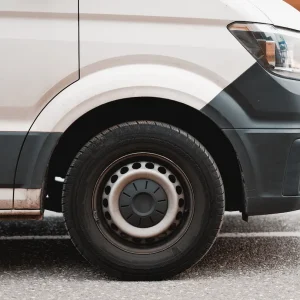Van operators face having to make deliveries in central London outside of daytime working hours as the capital’s mayor Sadiq Khan puts in place a plan to bar cars and light commercial vehicles from entering a large area of the city centre to avoid congestion as the coronavirus lockdown is eased.
Khan announced that main streets between between London Bridge and Shoreditch, Euston and Waterloo, and Old Street and Holborn, could be reserved for buses, pedestrians and cyclists.
With social distancing measures cutting the number of people who can use public transport and the government advising people returning to work to use their own vehicles if possible, Khan believes the streets could become gridlocked, triggering a spike in air pollution, without measures to encourage more people to walk or cycle to work. The London Assembly says the measures would mean deliveries to the affected streets would have to be made outside of congestion charging hours.
Work on the road closures is expected to be completed within six weeks.
In a further move to prevent traffic building up the Congestion Charge Zone, Low Emission Zone and Ultra Low Emission Zone were reinstated on 18 May following their suspension on 23 March when the UK went into lockdown.
Transport for London (TfL) is to raise the daily cost of the Congestion Charge from £11.50 to £15 and to extend its hours of operation to 7.00am to 10.00pm (from 7.00am to 6.00pm) and from five to seven days a week from 22 June for a period of a year.
Although Khan claims the price rise will stop congestion from returning to pre-Covid levels, it follows a government bailout for TFL amounting to £1.6bn to counter the loss of revenue from tube and bus fares during the lockdown. Conditions of the loan included the reinstatement of fares on buses, as well as restarting the congestion and ULEZ charges.
Khan said: “Covid-19 poses the biggest challenge to London’s public transport network in TfL’s history. It will take a monumental effort from all Londoners to maintain safe social distancing on public transport as lockdown restrictions are gradually eased.
“That means we have to keep the number of people using public transport as low as possible. And we can’t see journeys formerly taken on public transport replaced with car usage because our roads would immediately become unusably blocked and toxic air pollution would soar.”
But Natalie Chapman, head of urban policy at the FTA, which represents the logistics sector, hit out at the re-introduction of road charging.
“Logistics operators have been forgotten in this bailout and are being expected to stage their own financial recovery while facing punitive charges at a time when many have been unable to work for the past eight weeks.”
Health campaigners, however, welcomed Khan’s proposals.
Mat Shaw, chief exec of Great Ormond Street Hospital (GOSH) said: “Air pollution has a serious and detrimental impact on child health. Through our publicly available Clean Air Hospital Framework, GOSH is committed to working towards being part of the solution to improve London’s air quality and contribute towards a healthier environment for all children and adults.
“Ambitious and creative ideas like these are key to creating child-friendly accessible cities for all and now is the time to act.”
In another central London area the City of London Corporation is working with Transport for London on plans to temporarily ban cars and vans from streets within the Square Mile financial district to create sufficient safe space for safe social distancing.





